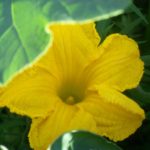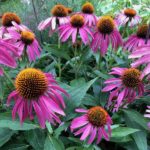Full Moon Blessings – October 28, 2023

Creating an ancestor altar – a place of remembrance for those who have passed on – could take place anytime during the year. However many spiritual traditions align their remembrance with the end of October and beginning of November. These include the Celtic festival of Samhain resurrected by modern earth-based spirituality, the European All Soul’s Day, and the Day of the Dead in Mexico. My own ancestors are from Southern Italy where La Festa dei Morti is celebrated on November 2nd. The Italian and Sicilian celebrations began in the Middle Ages with community wide feasts honoring the dead. Children received baskets of small gifts and candies. Sugar and crushed almonds (marzipan) are molded into elaborate characters from Italian folklore and also tiny fruits & veggies.
 Certainly these various celebrations may have influenced each other’s timing. However, they also may have tuned into the feeling that the veil between the worlds is thinner at this time of year. For those of us in the norther hemisphere, autumn is a time where the cycles of life and death are very evident. Deciduous trees are shedding their leaves in colorful displays. Many perennials are retreating into the ground and annuals have turned to seed. Autumn reminds us vividly of the cycle of life and death. The increased darkness and cold also contribute to a feeling of introspection and a time to connect with ancestors.
Certainly these various celebrations may have influenced each other’s timing. However, they also may have tuned into the feeling that the veil between the worlds is thinner at this time of year. For those of us in the norther hemisphere, autumn is a time where the cycles of life and death are very evident. Deciduous trees are shedding their leaves in colorful displays. Many perennials are retreating into the ground and annuals have turned to seed. Autumn reminds us vividly of the cycle of life and death. The increased darkness and cold also contribute to a feeling of introspection and a time to connect with ancestors.
Creating an Ancestor Altar
 Creating a place of remembrance for those who have passed on is a beautiful tradition. It is a practice of honoring the memories and also being grateful for the gifts. And we’ve all been gifted by our ancestors. The simple fact that we are here means that countless people before us survived – at least long enough to procreate.
Creating a place of remembrance for those who have passed on is a beautiful tradition. It is a practice of honoring the memories and also being grateful for the gifts. And we’ve all been gifted by our ancestors. The simple fact that we are here means that countless people before us survived – at least long enough to procreate.
The altar can include anything that honors your ancestors’ memories. Photos of course are an obvious choice. You can include favorite foods and items they loved. It doesn’t have to be complicated. Simply taking the time to create a place of remembrance and honor, with a pictures and symbols is sufficient. But you can also make it as elaborate as you choose.
The ancestor altar can include more than the people you remember. If you don’t know much about your ancestors, take some time to explore the history. That is easier to do now than any time in the past because of the internet. You may discover things that inspire and strengthen you.
Plants for the Ancestor Altar

Don’t forget the green world when setting up your altar. Sometimes there may be specific fruits, flowers, or vegetables that hold special meaning. However there are also some traditional plants that are strongly aligned with remembrance and connection.
The first is rosemary, which has a strong correspondence with remembrance. During the Middle Ages in Europe, rosemary was included in funerals as a symbol of remembering the dead. It was also included at weddings, in bouquets and headpieces, as a remembrance of love, friendship, and loyalty.
Sage is a plant that represents wisdom and a sprig of sage on the altar acknowledges the wisdom of our ancestors. If you can’t articulate the wisdom you’ve gained from your ancestors, spend some time contemplating and journaling about that concept.
Rue is an herb of protection. This one may be a little harder to find than sage or rosemary, but a rue is a great addition to the altar. Rue has been used for centuries to clear away negative energy. If there are challenging stories from the past associated with our ancestors (everyone has them – not everyone knows them), rue can clear away that energy and help us focus on the gifts.
 Pumpkins , in addition to being a perfect symbol of fall, have an energetic quality of connectedness. If you grow pumpkins you know how prolific they can be with vines spreading out in every direction. They are a visual reminder of the invisible forces that tie us to the people who have gone before us. They also store for many months into the winter and so are a symbol of resilience and heartiness, traits of our ancestors.
Pumpkins , in addition to being a perfect symbol of fall, have an energetic quality of connectedness. If you grow pumpkins you know how prolific they can be with vines spreading out in every direction. They are a visual reminder of the invisible forces that tie us to the people who have gone before us. They also store for many months into the winter and so are a symbol of resilience and heartiness, traits of our ancestors.
Creating an Ancestor Altar is a Mindfulness Practice
Stopping to honor, appreciate, and remember those who went before us is a mindfulness practice. Creating an ancestor altar provides an opportunity to slow down, consider what is important, and acknowledge our connection to the past. It opens a space for us to acknowledge all the gifts of the past and how we got to this place. It is also a reminder that we will become part of someone else’s past. Connections extend backward through time and forward into the future. Consider carving out some time between Halloween parties and raking leaves (or shoveling snow) to go inward a bit and contemplate the deep connections to the ancestors.

Lunar Blog Posts

This post is part of my lunar blog series. Each full moon I usually write about one plant, many of them are plants featured in my book, Growing Mindful. Each new moon I write about a topic related to gardens, mindfulness, and spirituality. For more details and a list of past lunar blog posts, click here.




Wonderful idea and brings home the traditions that I have heard of but not embraced. I will do an alter this year. With Gratitude, Tracy
Thanks Tracy! It is a beautiful tradition.
What a beautiful idea. Going to set up mine with photos and small nosegay of rosemary sage & rue. Thank you for introducing me to, what will be, a new tradition which will join my garden gratitude ritual. May you be warm & well as snow is on the way here. 🧡
Thanks Susan! It is a lovely practice. We had snow and bitter cold over the weekend but warming a little this week. Still with the shorter days it feels like a very introspective time.